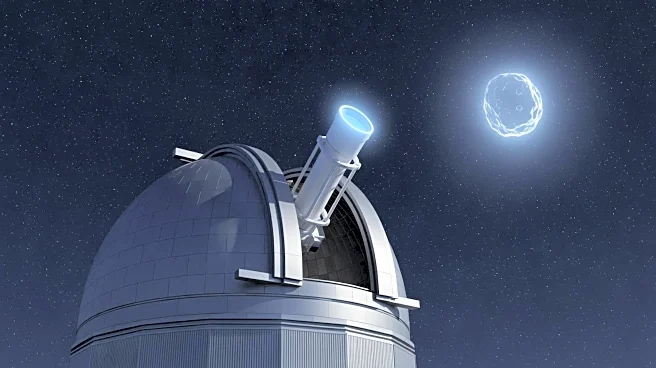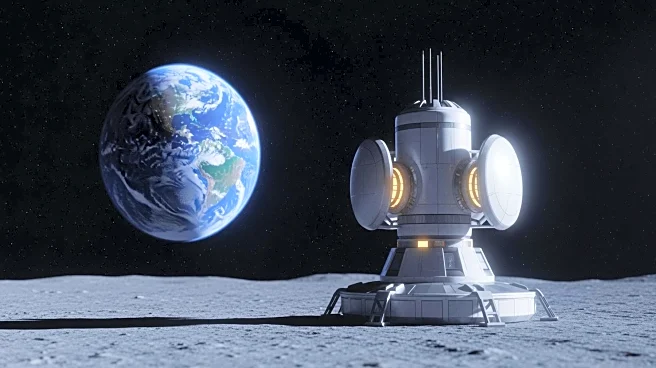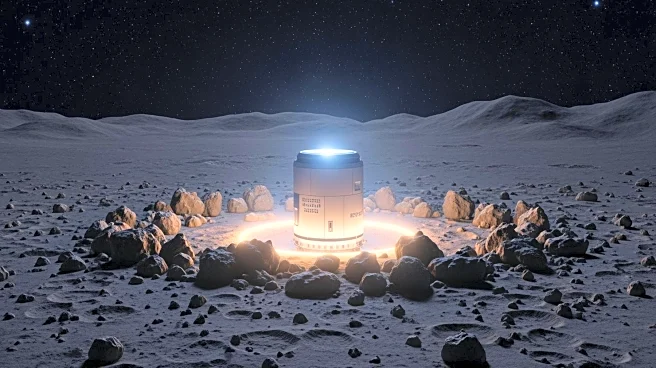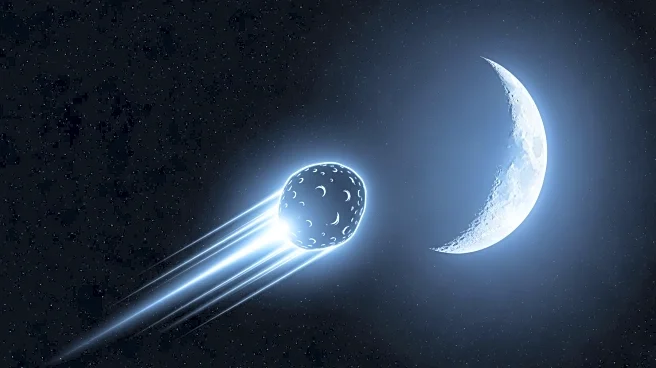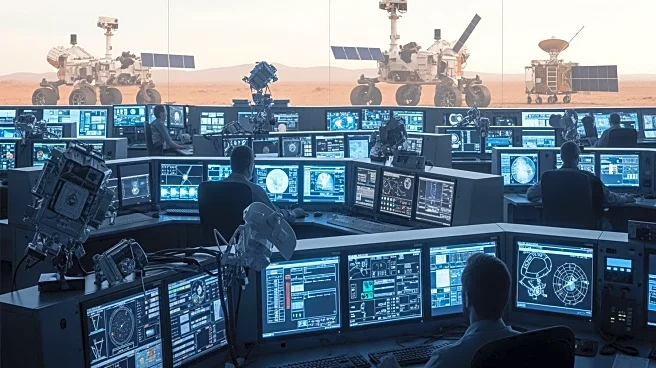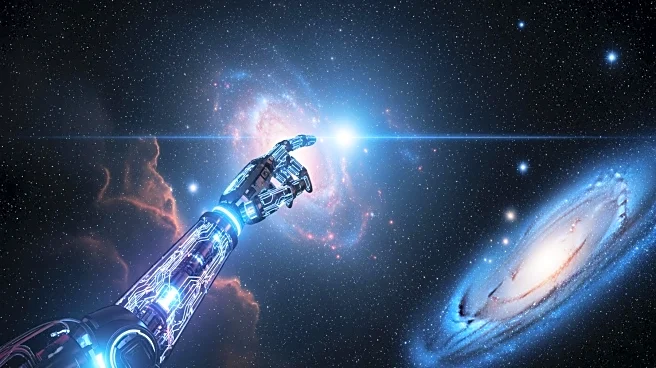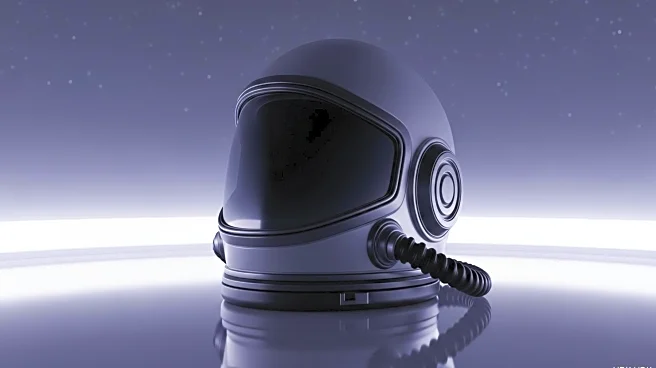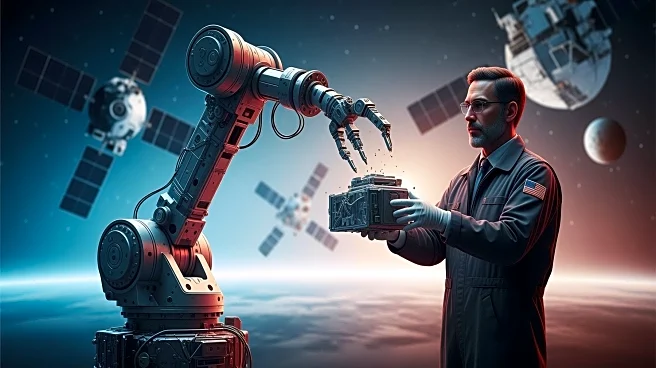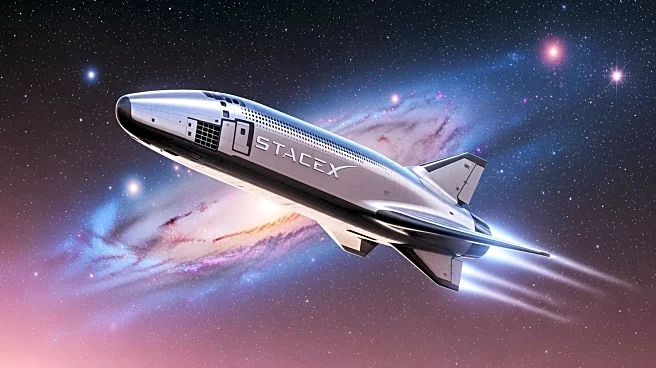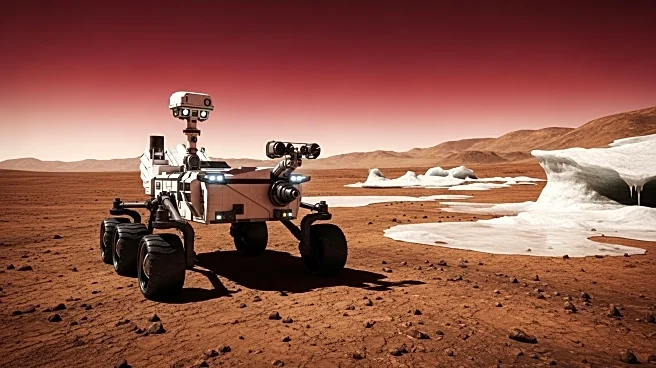What's Happening?
NASA's Jet Propulsion Laboratory has reported that a newly discovered asteroid, named 2025 TP5, will pass by Earth at a distance closer than the moon. The asteroid, detected by the Asteroid Terrestrial-impact
Last Alert System (ATLAS) on October 13, 2025, is expected to sail by Earth at 4:09 p.m. EDT on October 15, at a minimum distance of 60,328 miles. This distance is significantly less than the average distance to the moon, which is 238,855 miles. The asteroid, with an estimated diameter of 54 feet, is comparable in size to the Chelyabinsk meteor that exploded over Russia in 2013. Despite its proximity, 2025 TP5 poses no threat to Earth, as confirmed by NASA's ongoing efforts to monitor potentially hazardous asteroids.
Why It's Important?
The detection of asteroid 2025 TP5 highlights the importance of NASA's ATLAS system, which serves as an early-warning mechanism for potentially hazardous asteroids. This system, developed by the University of Hawaii and funded by NASA, plays a crucial role in identifying space rocks that could pose a threat to Earth. The ability to detect asteroids at such close distances underscores advancements in astronomical technology and the ongoing efforts to safeguard the planet from potential impacts. While 2025 TP5 is not a threat, the event serves as a reminder of the need for continued vigilance and investment in asteroid detection systems.
What's Next?
Following its close approach to Earth, asteroid 2025 TP5 will make a subsequent flyby of the moon on October 16, coming as close as 74,616 miles to the lunar surface. The continued monitoring of such asteroids is essential for planetary defense strategies. NASA and other international space agencies will likely continue to enhance their detection capabilities to ensure timely identification of any future threats. The event may also prompt discussions on the development of mitigation strategies for potential asteroid impacts.
Beyond the Headlines
The detection of 2025 TP5 also raises questions about the broader implications of asteroid monitoring and planetary defense. As technology improves, the frequency of detecting smaller asteroids increases, which could lead to more comprehensive catalogs of near-Earth objects. This could influence future space missions aimed at studying asteroids or developing deflection techniques. Additionally, the event may contribute to public awareness and interest in space exploration and the importance of protecting Earth from extraterrestrial threats.
